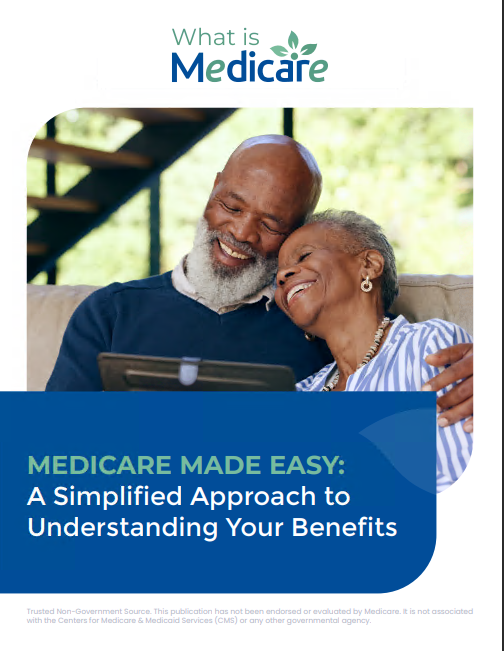Key Takeaways:
- Understanding the factors that influence Medicare prescription drug plan costs can help you make informed decisions about your healthcare coverage.
- Calculating premiums, deductibles, and out-of-pocket costs is essential for estimating your overall expenses.
Estimating Costs for Medicare Prescription Drug Coverage
Medicare prescription drug coverage, also known as Part D, helps cover the cost of prescription medications. Estimating the costs associated with these plans is crucial for budgeting and managing your healthcare expenses. This article will provide a detailed guide to help you understand and estimate the costs for Medicare prescription drug coverage.
Key Factors Influencing Medicare Prescription Drug Plan Costs
Several factors influence the costs associated with Medicare prescription drug plans. Understanding these factors can help you better estimate your expenses and choose the plan that best fits your needs.
Premiums
The premium is the amount you pay each month for your Medicare prescription drug plan. Premiums vary depending on the plan you choose, your location, and the insurance provider. In general, higher premiums may offer more extensive coverage or lower out-of-pocket costs. It is essential to compare different plans and their premiums to find one that fits your budget and medication needs.
Deductibles
The deductible is the amount you pay out-of-pocket for your prescriptions before your plan begins to cover costs. Deductibles vary by plan and can range from $0 to several hundred dollars annually. Plans with higher deductibles often have lower monthly premiums, and vice versa. When estimating your costs, consider how much you expect to spend on medications annually and whether a higher deductible or higher premium plan would be more cost-effective for you.
Copayments and Coinsurance
Copayments (copays) and coinsurance are the amounts you pay for each prescription after you have met your deductible. Copays are fixed amounts, while coinsurance is a percentage of the cost of the medication. These costs can vary significantly between plans and medications. To estimate your out-of-pocket expenses, review the copays and coinsurance rates for your prescriptions under different plans.
Formulary and Drug Tiers
A formulary is a list of medications covered by a Medicare prescription drug plan. Drugs are categorized into tiers based on their cost and usage. Typically, lower-tier drugs have lower copays, while higher-tier drugs have higher copays or coinsurance. Reviewing a plan’s formulary and drug tiers can help you estimate the cost of your specific medications.
How to Calculate Your Monthly Premiums
Calculating your monthly premiums is a straightforward process, but it’s essential to consider all variables involved.
Step 1: Identify Plan Premiums
Start by identifying the monthly premiums for the plans available in your area. You can find this information on the Medicare website or through insurance providers’ websites. Make a list of plans that fit within your budget.
Step 2: Consider Your Income
Your income can affect your premiums. Higher-income beneficiaries may have to pay an additional amount, known as the Income-Related Monthly Adjustment Amount (IRMAA). Check if IRMAA applies to you and factor this into your premium calculation.
Step 3: Calculate Total Annual Premiums
Multiply the monthly premium by 12 to get the total annual premium. If IRMAA applies, add this amount to your annual premium. This gives you a clear picture of your yearly premium expenses.
Step 4: Compare Plans
Compare the total annual premiums of different plans, considering the coverage each plan offers. Remember, a lower premium plan might have higher out-of-pocket costs, so it’s essential to balance premium costs with overall coverage.
Understanding the Annual Deductible
The annual deductible is another critical component of your Medicare prescription drug plan costs. Here’s how to estimate and understand its impact on your expenses.
Step 1: Identify Plan Deductibles
Review the deductibles for the plans you are considering. Plans may have different deductible amounts, ranging from $0 to a specified maximum set by Medicare each year.
Step 2: Calculate Out-of-Pocket Costs Before Deductible
Determine the total cost of your prescriptions and how much you will need to pay out-of-pocket before reaching your deductible. This amount is your deductible amount, and you must pay it before your plan begins to cover the costs.
Step 3: Estimate Timing
Consider when during the year you are likely to meet your deductible based on your prescription needs. For example, if you take multiple medications, you may reach your deductible early in the year. This estimation helps you plan for higher initial out-of-pocket costs and lower costs later in the year.
Step 4: Compare Deductibles Across Plans
Compare the deductibles across different plans and consider how they align with your medication usage and budget. A higher deductible plan may be more cost-effective if it has lower premiums and you don’t take many medications.
Estimating Out-of-Pocket Costs and Copayments
Out-of-pocket costs and copayments can significantly affect your overall spending on medications. Here’s how to estimate these costs effectively.
Step 1: Review Plan Formularies
Each plan has a formulary that categorizes medications into different tiers. Review the formulary for the plans you are considering and identify the tier of each medication you take.
Step 2: Identify Copayment and Coinsurance Rates
Find the copayment or coinsurance rate for each tier. Lower-tier drugs generally have lower copays, while higher-tier drugs have higher copays or coinsurance rates. Make a list of your medications and their respective copay or coinsurance rates under each plan.
Step 3: Calculate Monthly and Annual Costs
Multiply the copayment or coinsurance rate by the number of times you fill each prescription per month to estimate your monthly out-of-pocket costs. Multiply this amount by 12 to get your annual out-of-pocket costs for each medication.
Step 4: Factor in Coverage Gap (Donut Hole)
Be aware of the coverage gap, commonly known as the “donut hole.” After you and your plan spend a certain amount on covered drugs, you may enter the coverage gap, where you pay a higher percentage of the cost until you reach the catastrophic coverage threshold. Estimate how your costs may change if you reach the coverage gap.
Step 5: Compare Out-of-Pocket Costs
Add up the total out-of-pocket costs for all your medications under each plan. Compare these totals to determine which plan offers the most cost-effective coverage for your needs.
Planning Ahead for Medicare Prescription Drug Costs
Effective planning and understanding the different components of Medicare prescription drug costs can help you manage your healthcare expenses. By carefully reviewing plan premiums, deductibles, copayments, and formularies, you can estimate your overall costs and choose a plan that fits your budget and medication needs.
Conclusion: Making Informed Decisions About Medicare Prescription Drug Coverage
Estimating the costs associated with Medicare prescription drug coverage involves understanding various factors such as premiums, deductibles, copayments, and the formulary. By analyzing these elements and comparing different plans, you can make informed decisions that help you manage your healthcare expenses effectively. Stay proactive, review your options annually, and adjust your plan as needed to ensure you have the best coverage for your medication needs.
Contact Information:
Email: [email protected]
Phone: 7185553456









